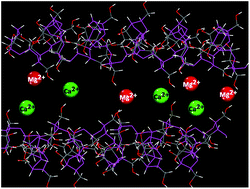Long-term stabilization of reflective foams in sea water
Abstract
This work explores the challenge of making persistent foams in salt water to provide high reflectance. While stable foam is essential in the food industry and in fire fighting, this is the first work aimed at combining foam persistence with reflectance. One application is the use of oceanic foams to increase planetary albedo: extending foam lifetime moderates the energy required to maintain large areas of ‘ocean mirror’. Two compositions to produce such foams in seawater are described. The first is based on high methyl ester pectin-type A gelatin complexes which produced foams with a reflectance of ∼0.5. The second produces stable foams using cellulose ethers and iota carrageenan gelling agents. These foams gelled in the presence of sea water to give measured reflectance of 0.65–0.75. Both had lifetimes, without wave action, beyond three months at which point the experiment ended. In contrast, single protein species such as gelatin B, whey protein isolate and albumin produced short-lived foams. Foam stability was measured by recording liquid drainage and foam height as a function of time. In the event that climate interventions are needed, such additives would be appropriate for nutrient-deficient ocean regions that support low levels of marine life.


 Please wait while we load your content...
Please wait while we load your content...